Sabudana papad recipe with step by steps pics. One of the tasty and popular papads made in Indian cuisine is this sabudana papad. As the name suggests sabudana papad is made from sabudana which are tapioca pearls. In addition to the sabudana, other ingredients that are added in this recipe are cumin seeds, rock salt or regular salt and lemon juice.
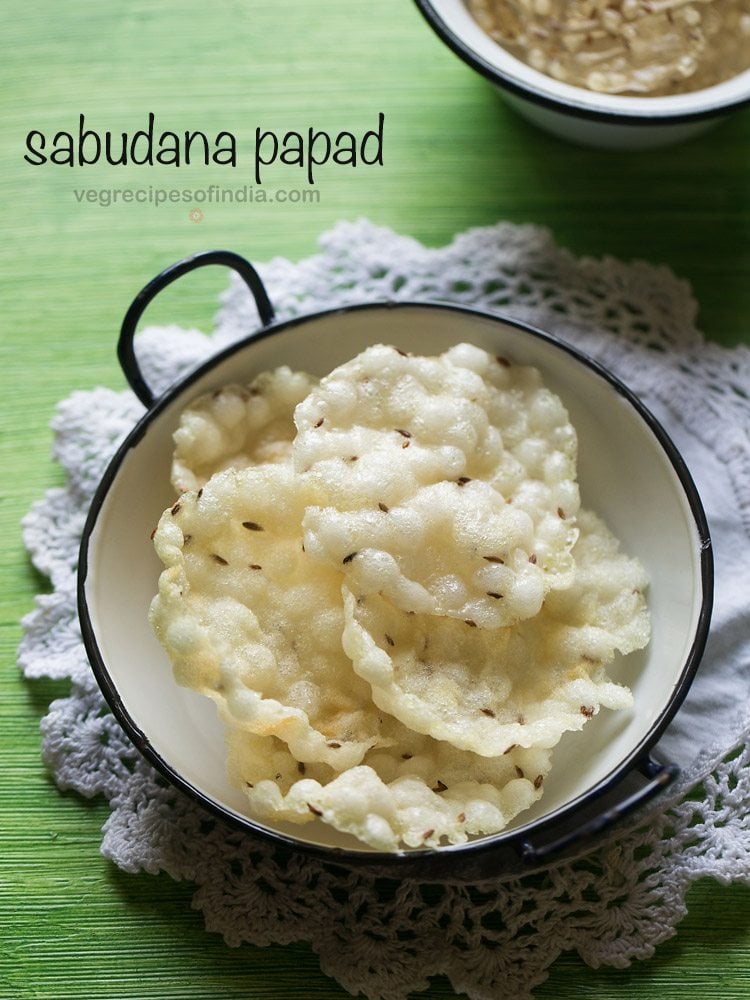
These papads are also called as sago papads. some more names for this dish in a few regional languages are javvarisi vadam (Tamil), sabakki sandige (Kannada) and saggubiyyam vadiyalu (Telugu).
Papads or pappadums are cereals, lentils or potato based thin, flat and round shaped food items that is deep fried and then served with Indian meals.
To make papads, either a porridge or dough is made from the main ingredient. This is then spread if using porridge or rolled if using dough which are then later sun dried.
Usually sabudana papad is made by cooking the tapioca pearls till it reaches a porridge like consistency, which is then spread in small to medium circles and then sun dried.
Sabudana papad is one of the easiest papad one can make. Usually due to lack of time, most people refrain from making papads at home as it is a time consuming process. But making sabudana papad is less time consuming as compared to making papads with other methods.
I am a sharing the simplest version of sabudana papad which I have learnt from my mom. These papads do not have hot spices added in it like green chilies or red chilies. So goes well with kids.
Though you can add some green chilli paste or chopped green chilies if you want. In fact you can spice the papad with your favorite herbs or spices. I usually like to add some more cumin seeds, but you can always reduce the amount of cumin seeds.
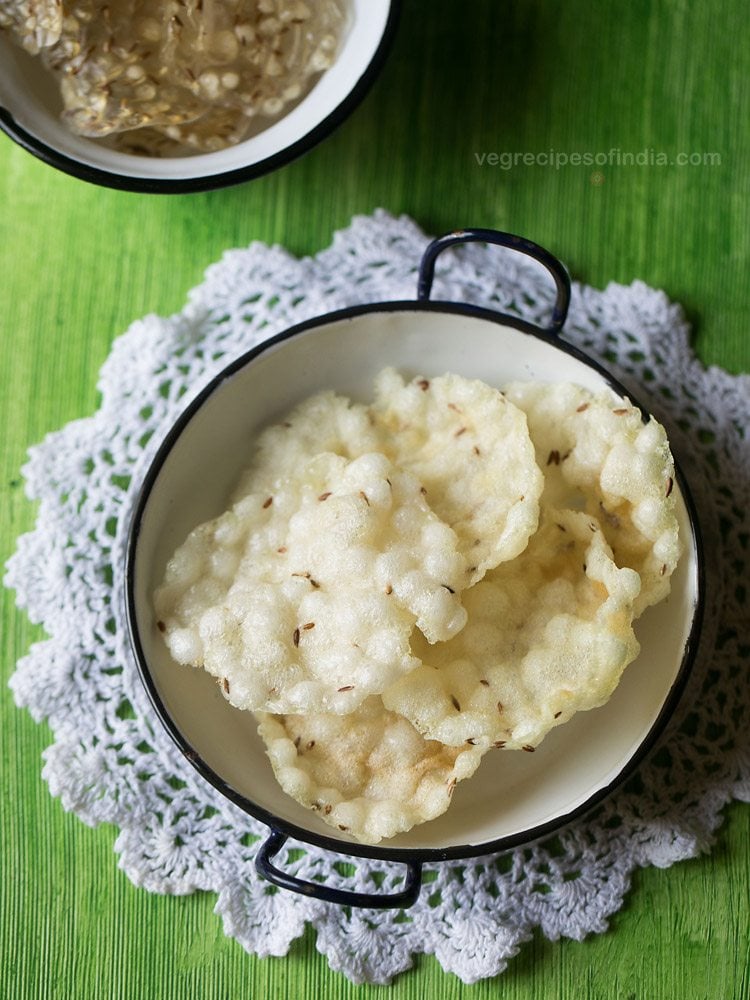
This recipe is also a satvik version of sabudana papad as I have added rock salt. So you can easily have them during fasting days (vrat) like Ekadashi or shivratri. This recipe makes for about 640 grams of sabudana papad. You can easily halve, double or triple the recipe to make a big batch.
I have been making sabudana papad for the last couple of years during summers. This time I thought of sharing the recipe. In this post I have mentioned the entire method of making sabudana papad as well as the frying part.
Serve fried sabudana papad with any Indian meal.
How to make Sabudana Papad
A) preparation and soaking:
1. Using a strainer rinse 1 cup sabudana (150 to 160 grams) in water once or twice. then soak sabudana in 1.5 to 1.75 cups water.
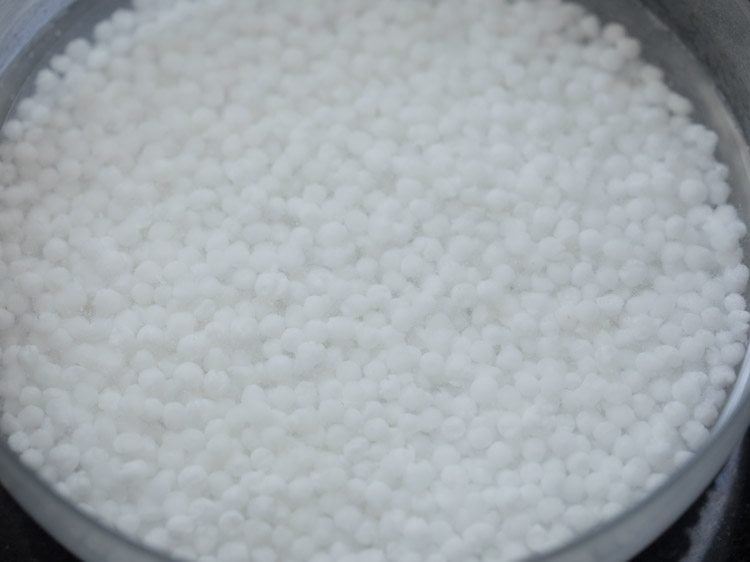
2. Soak for 2 to 3 hours or overnight.
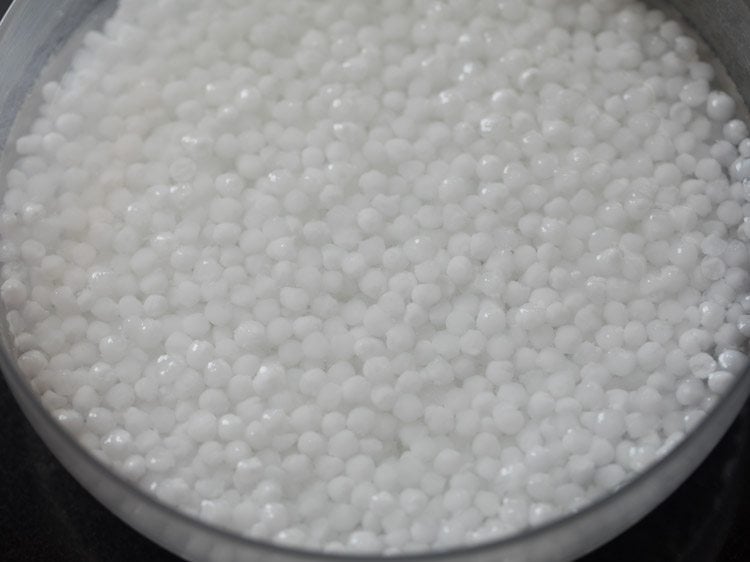
3. Later check a few sabudana by mashing them with your fingers. They should mash easily when you press them. If the center feels hard, then soak for some more time. If the pearls are softened well, then drain all the water.
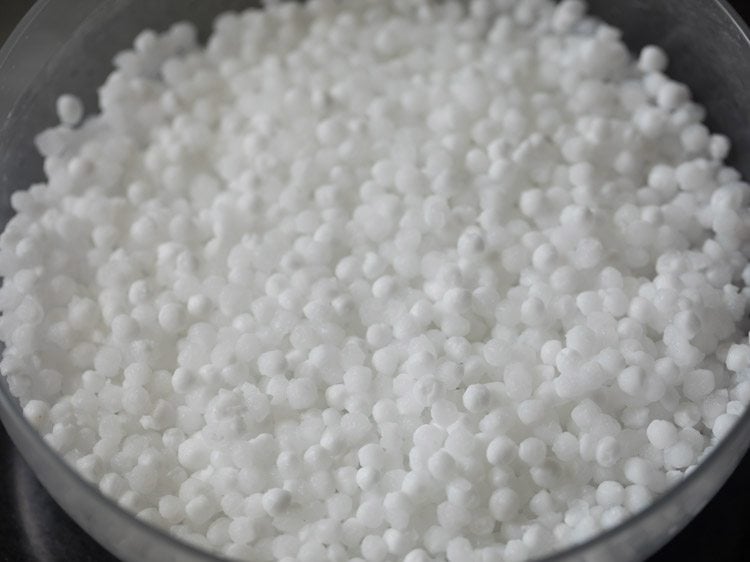
Cooking sabudana papad mixture
4. In a heavy pan or kadai take 4 cups water.
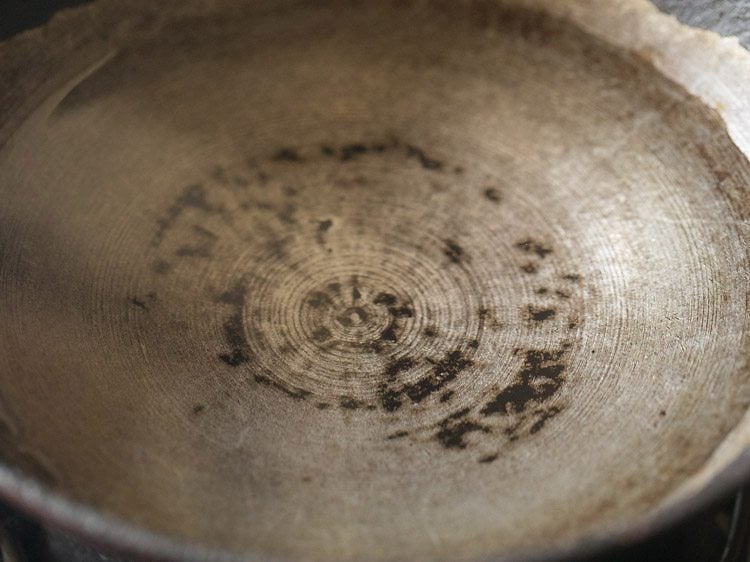
5. Add the sabudana.
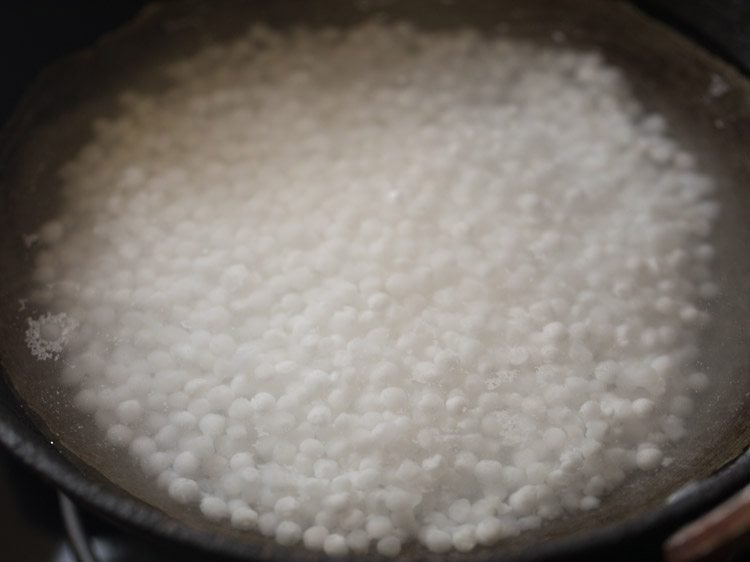
6. Add 2 teaspoons cumin seeds. For more taste of jeera, you can add 3 teaspoons cumin seeds also. For some heat and spice, you can also add green chilli paste or dry red chili paste or chopped green chilies.
Some garlic paste or ginger paste can also be added. Since cumin seeds are added, the papads will have a faint yellow color in the. For a white color, add less cumin seeds.
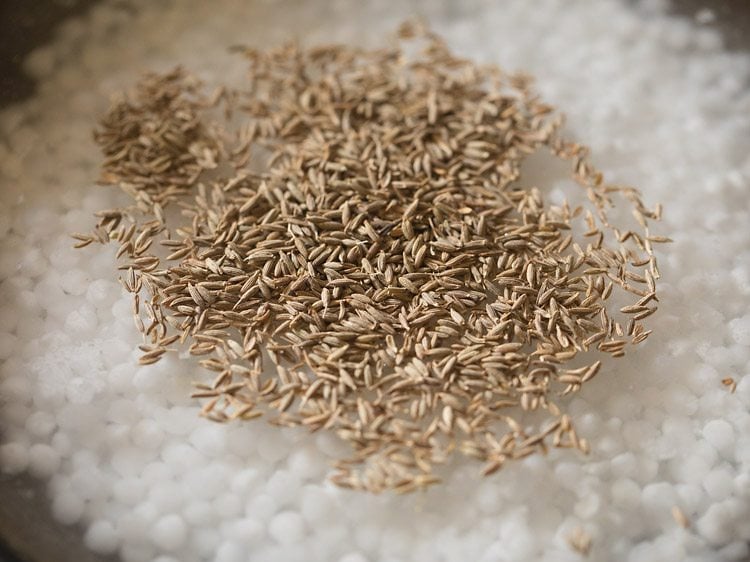
7. Add 1.5 teaspoons rock salt or as per taste. You can also use 1 to 1.5 teaspoons regular salt instead of rock salt.
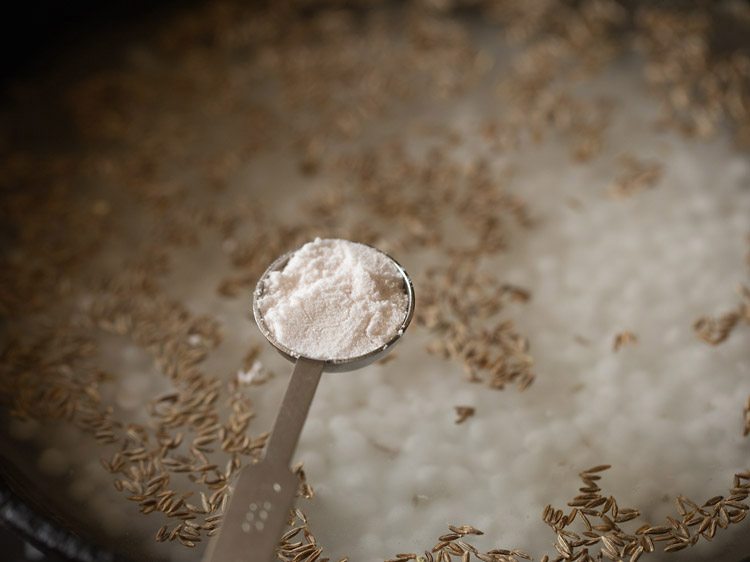
8. Mix everything and keep the kadai or pan on the stove top on a low to medium-low flame. Keep stirring at intervals.
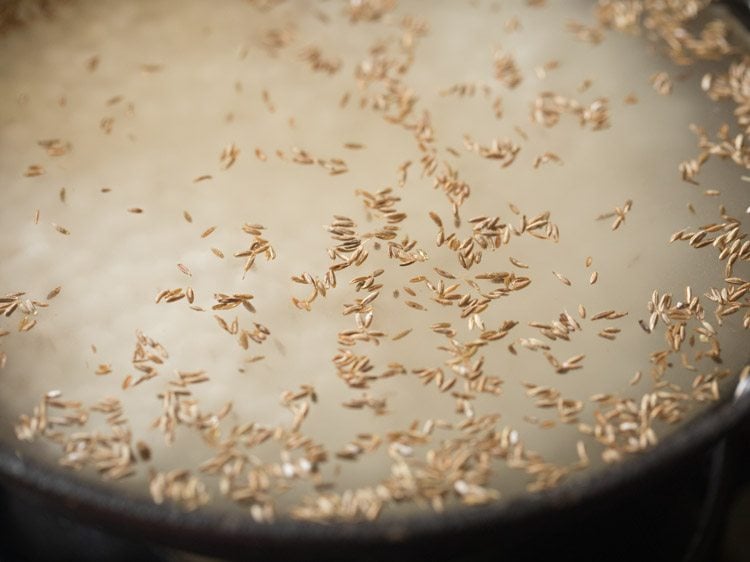
9. Do keep a check when the sabudana mixture is getting cooked.
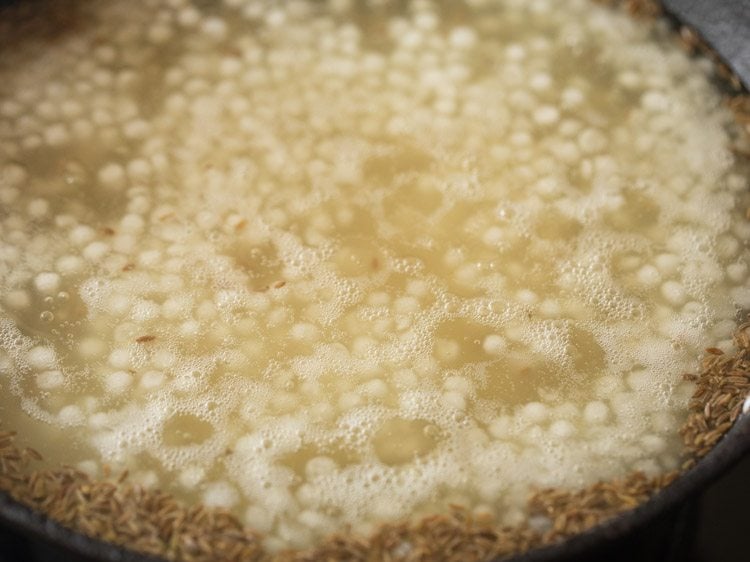
10. Slowly and gradually the mixture will start thickening. Do stir in between so that the sabudana pearls do not stick to the bottom of the pan or kadai.
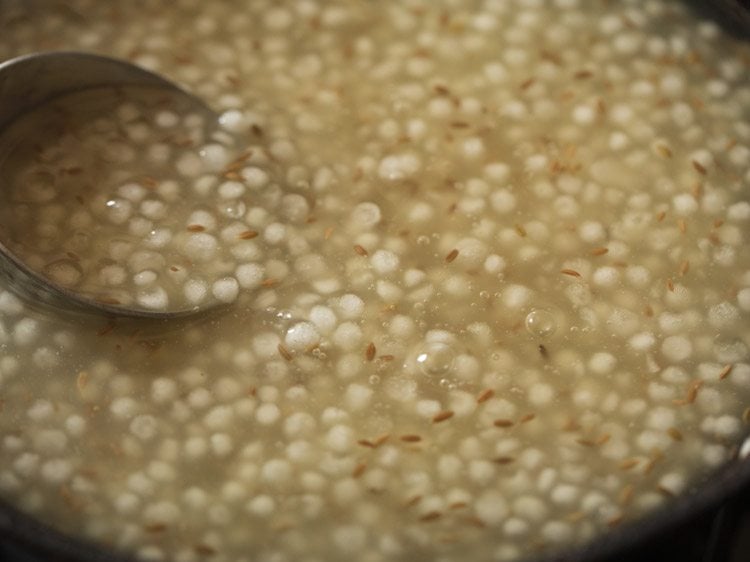
11. Meanwhile place a parchment paper or butter paper or a large tray or plate. You may need 3 to 4 trays or plate. You can also use a large sheet of plastic to spread the sabudana papads.
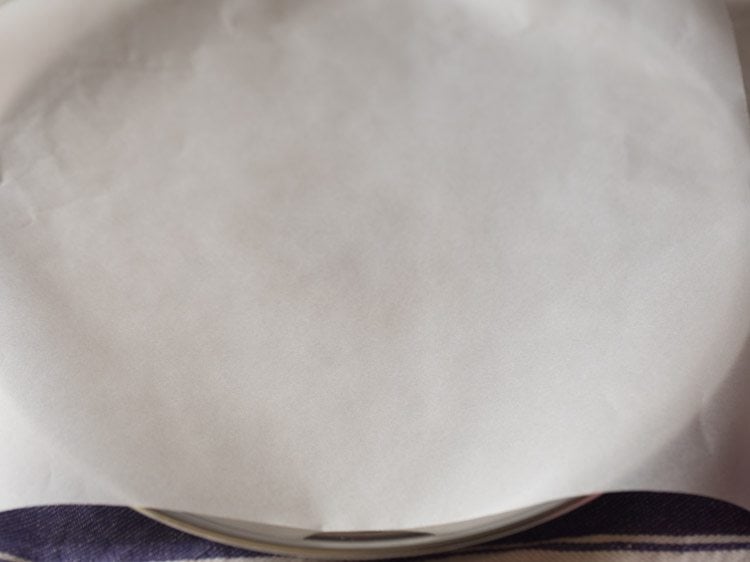
12. When the sabudana pearls have softened, turned translucent and you see a porridge like consistency, then the mixture is done.
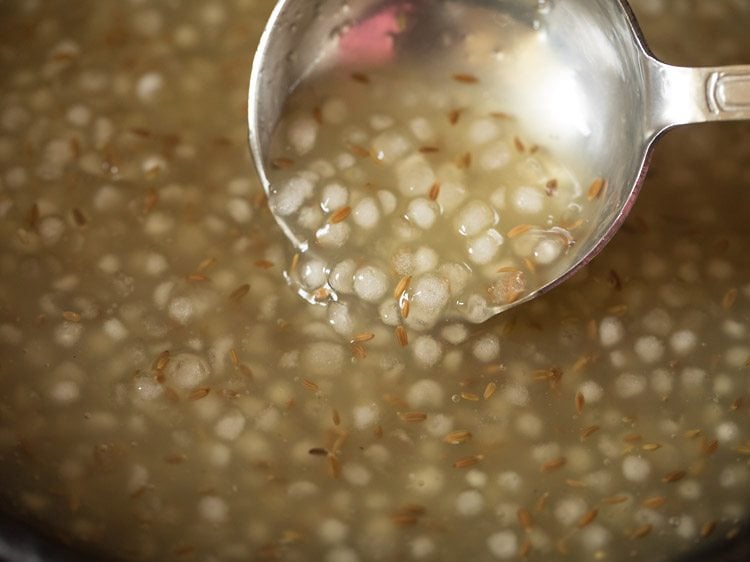
13. Switch off the flame.
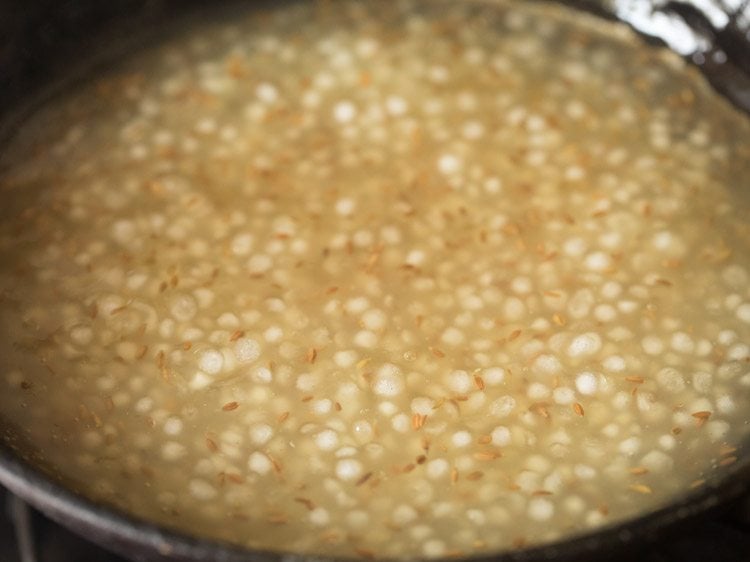
14. Add 1 teaspoon lemon juice.
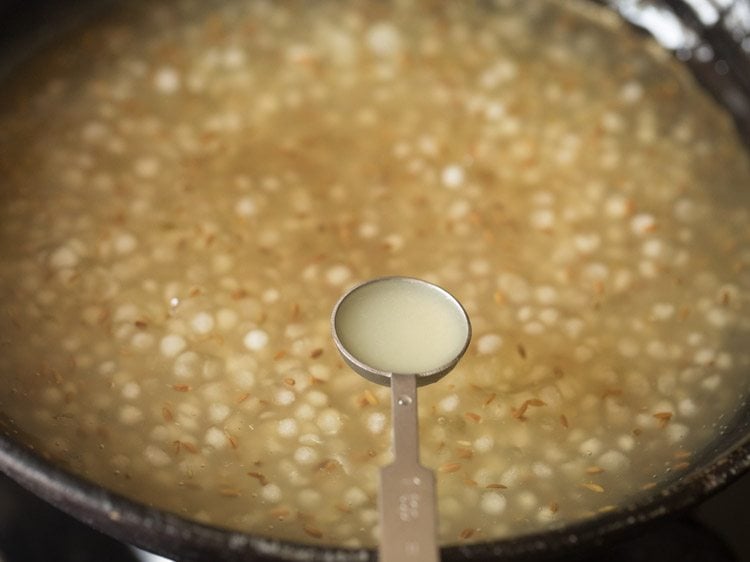
15. Mix very well.
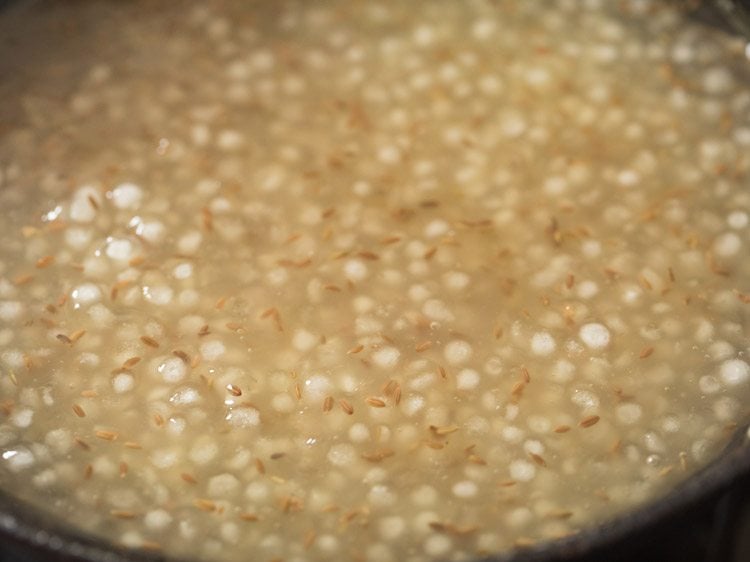
Making sabudana papad
16. Now take the sabudana papad mixture in a spoon. I have used a tablespoon here.
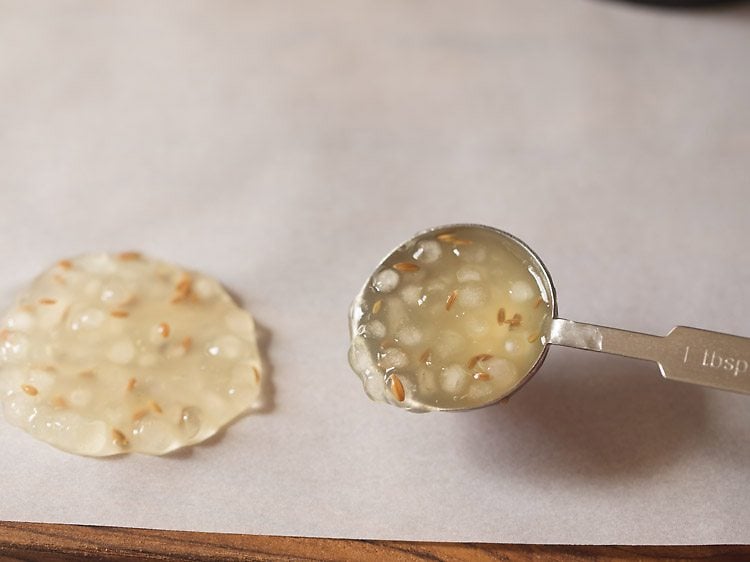
17. Gently pour it on the butter paper.
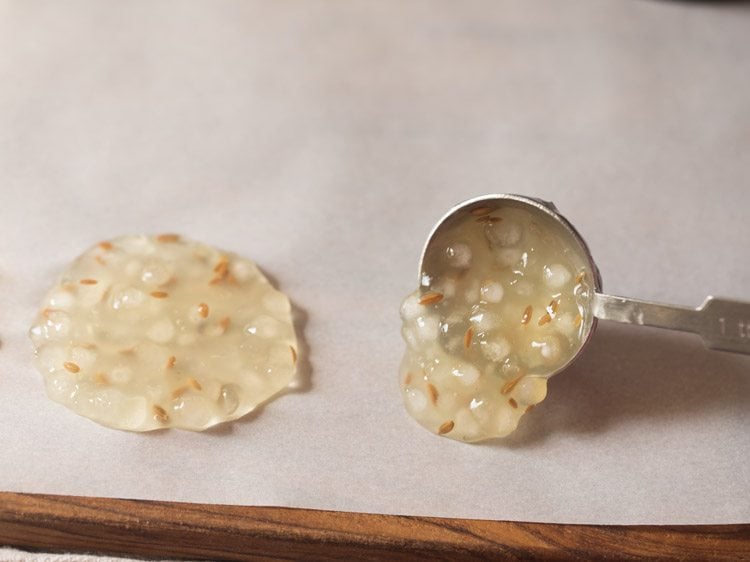
18. With the spoon itself lightly spread it.
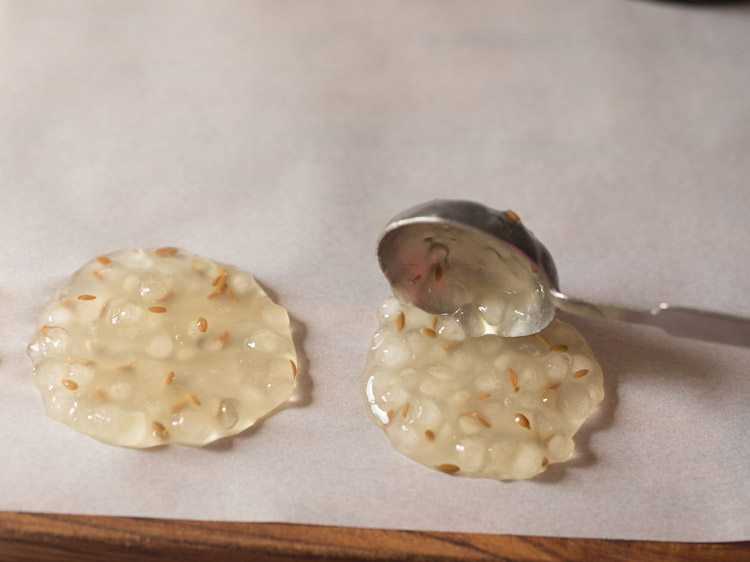
19. Do this with the entire mixture. You have to spread the sabudana papad mixture as soon as you switch off the flame. On cooling the mixture will thicken more and become lumpy making it difficult to make papads.
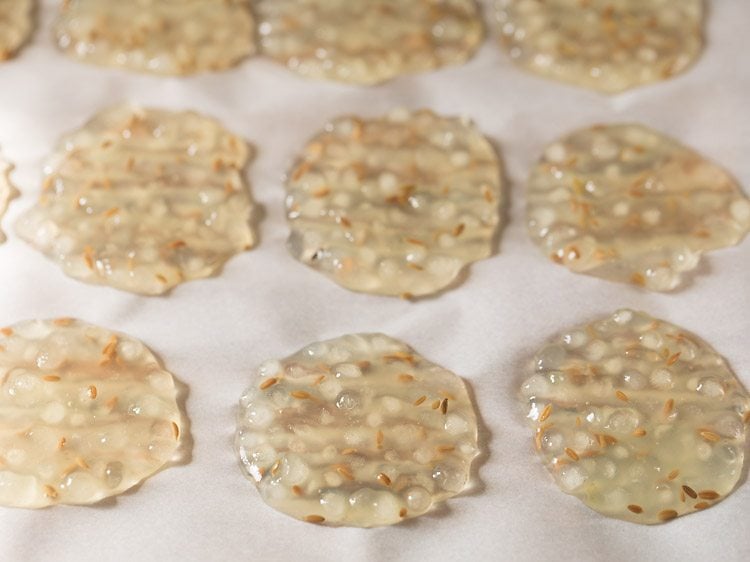
20. Keep the sabudana papads to sun dry for 5 to 6 days. The number of days will depend on the intensity of sunlight received and the number of hours the papads are kept in direct sunlight.
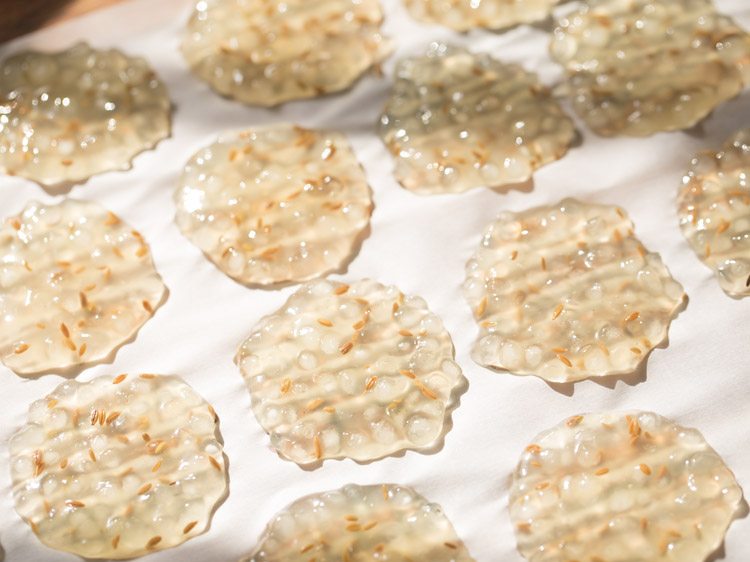
21. Below is a pic of papad after sun drying for 1 day. After 1 day, you can cover a thin cotton cloth on the sun drying papads to avoid dust from settling on them, especially if you stay in a place where there is a lot of dust in the air.
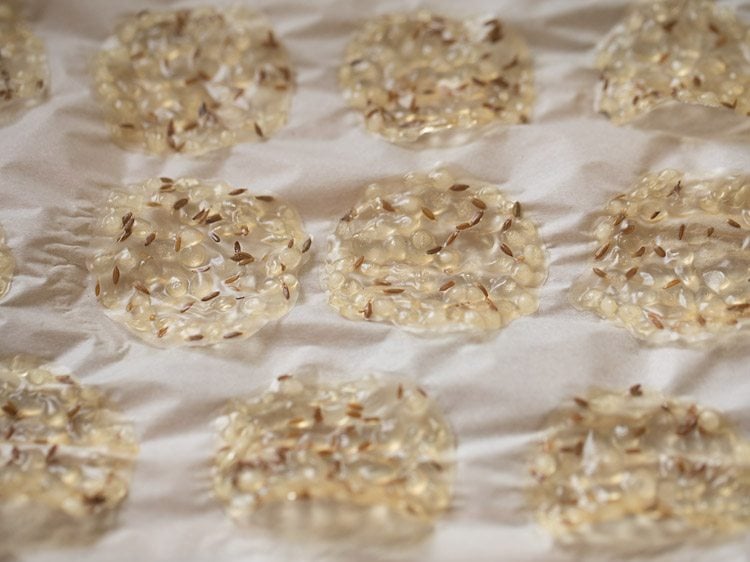
22. This picture of sabudana papad is after sun drying for 3 days. During the night, get the trays or plates in your kitchen. Then the next day again you can keep them in the sunlight.
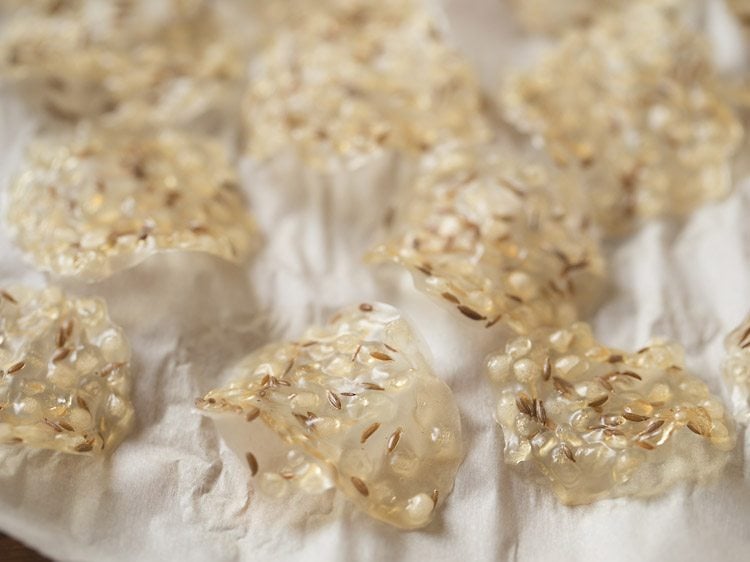
23. After getting sun dried for 6 days, the sabudana papads have become crisp, brittle and are dried completely.
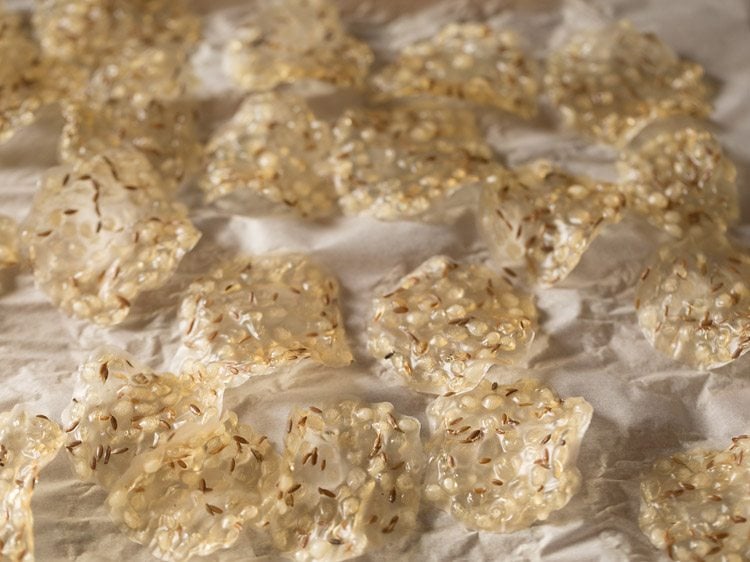
24. Store them in an air tight jar at room temperature.
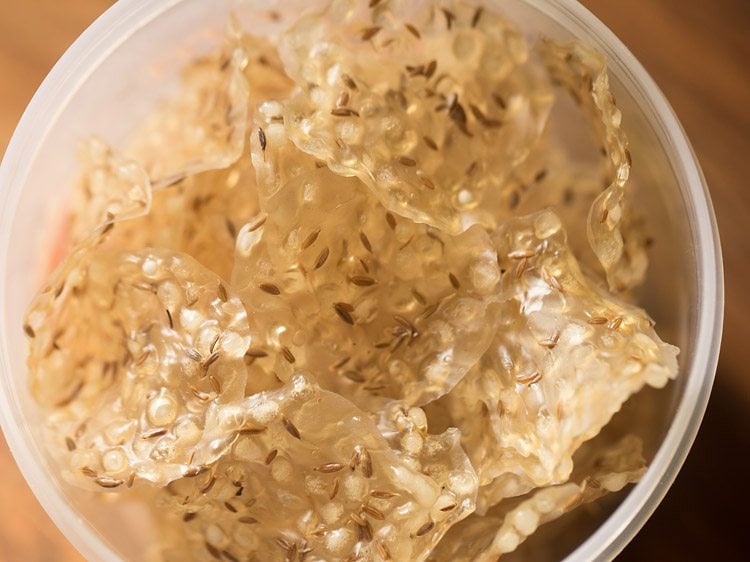
Frying sabudana papad
25. Heat some oil in a kadai. Do not use too much oil but just enough oil for the papads to be deep fried. let the oil become hot and keep the flame on medium.
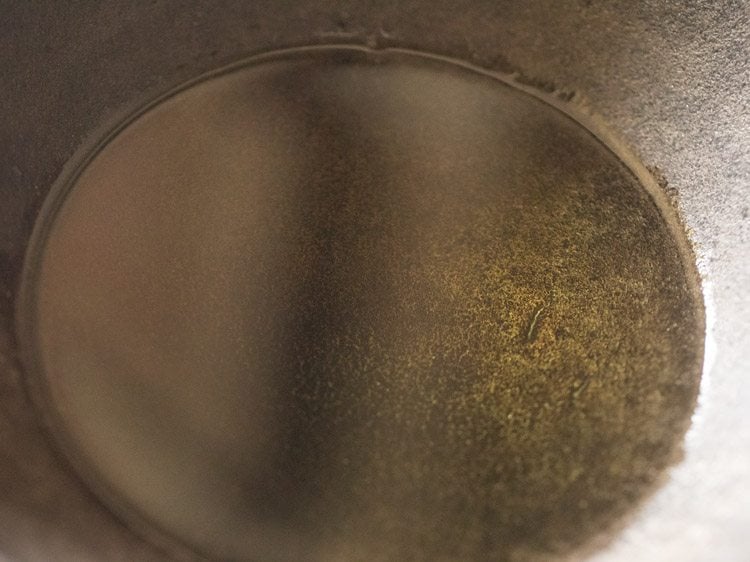
26. Place sabudana papad in the hot oil.
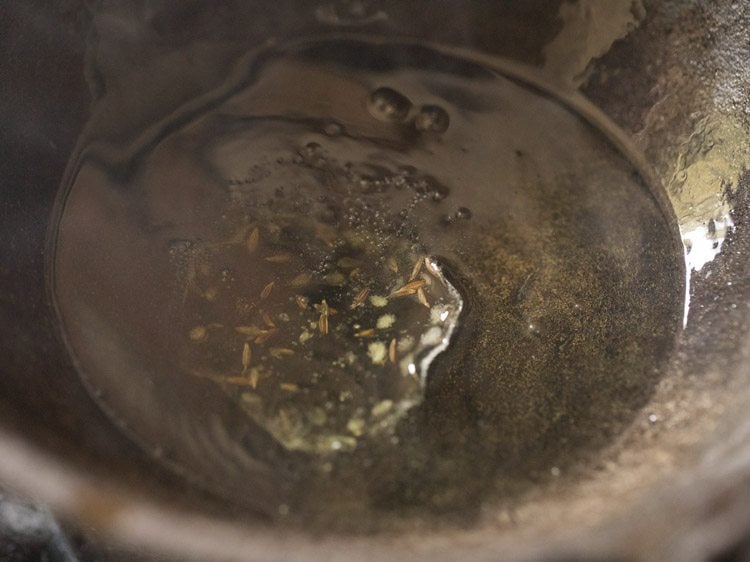
27. The papad will start to puff up as soon as you place it in the oil.
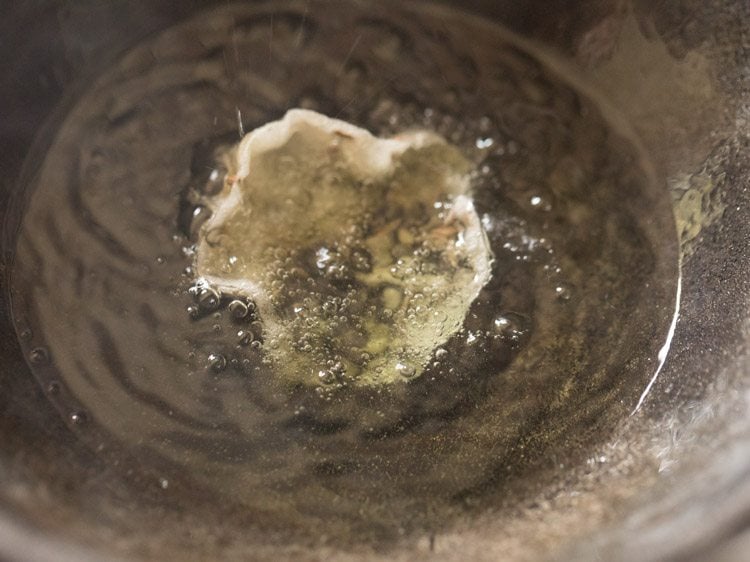
28. With the help of tongs or a spatula press the papad on various sides when frying, so that it gets fried evenly. Be careful also as at times some oil also splutters when frying sabudana papads.
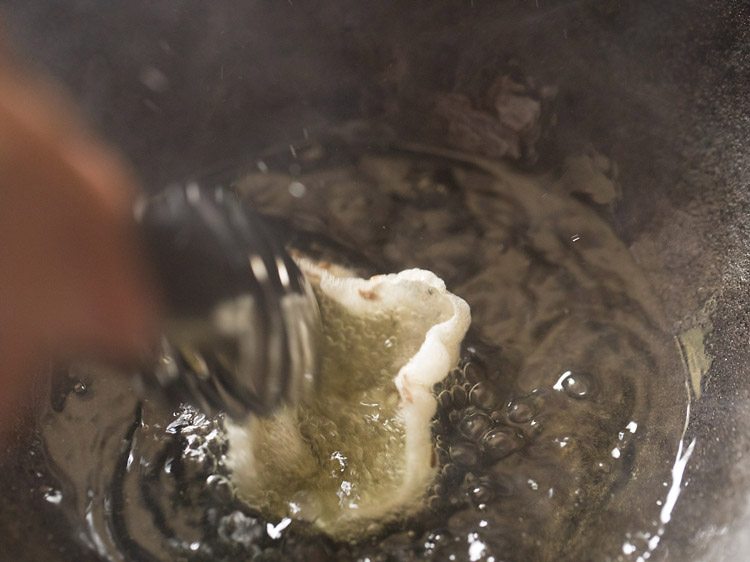
29. When the papad is fried from one side, lift it with the tongs.
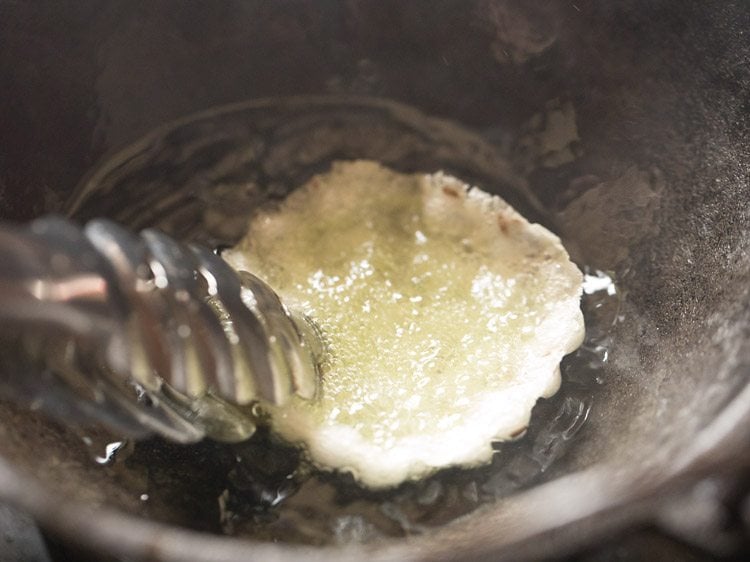
30. Turn over and fry the second side.
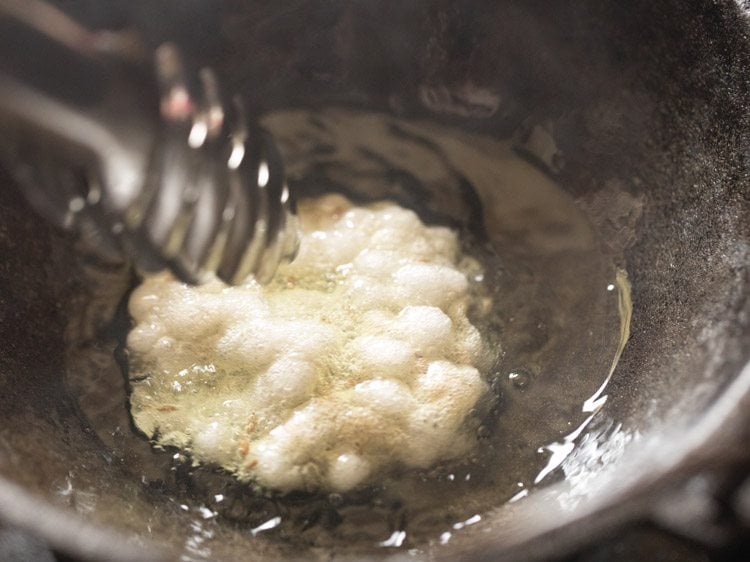
31. Fry for some seconds till the second side is crisp.
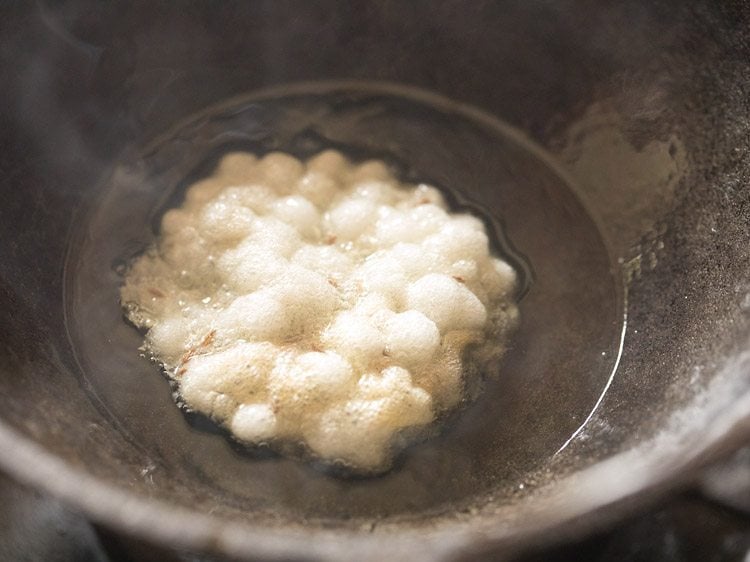
32. Lift with the tongs. Do not fry the sabudana papads till golden. They just need to be fried till they look crisp and white. A few golden specks here and there are fine.
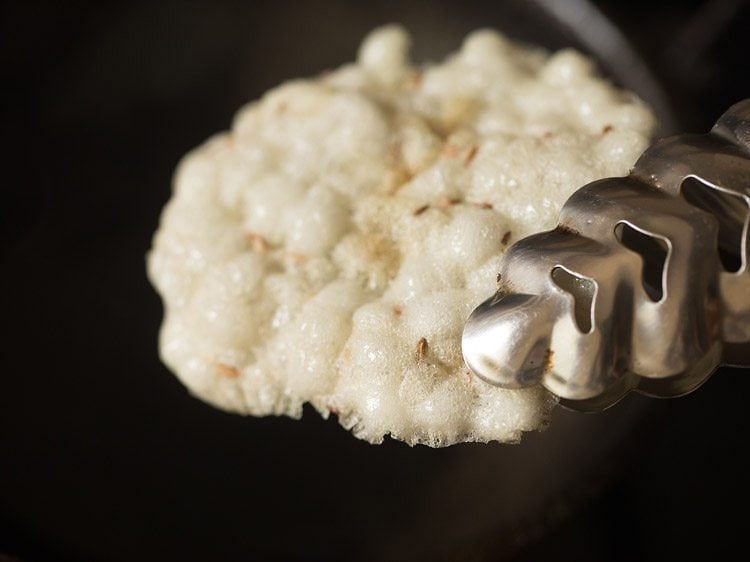
33. Place the fried sabudana papad on kitchen paper towels to absorb extra oil. This way fry all the papads in batches.
You can fry papads and place them in an air tight steel box if serving lunch after a few hours. In an air-tight box, these papads stay crisp for 1 to 2 days.
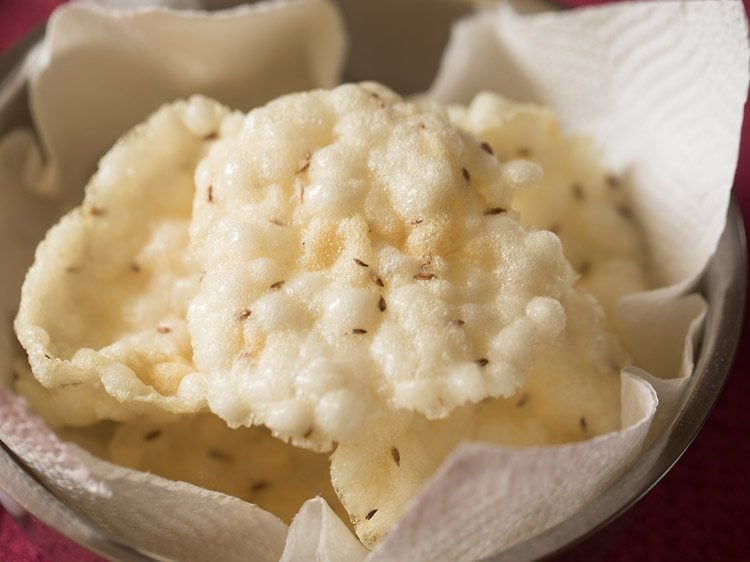
34. Serve sabudana papad with any Indian meal.
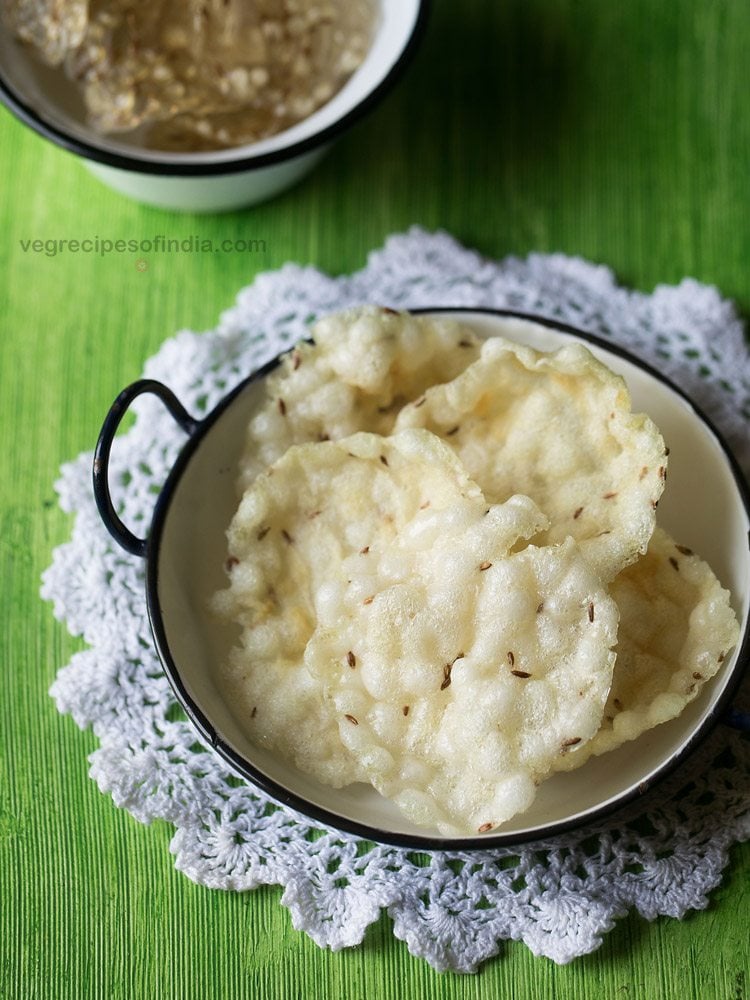
A few more Sabudana recipes on blog are:
Please be sure to rate the recipe in the recipe card or leave a comment below if you have made it. For more vegetarian inspirations, Sign Up for my emails or follow me on Instagram, Youtube, Facebook, Pinterest or Twitter.
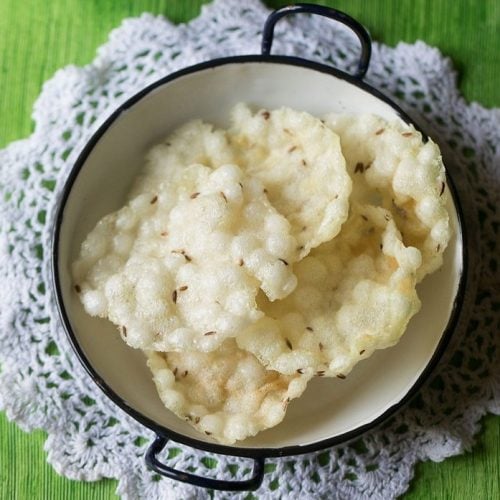
Sabudana Papad | Javvarisi Vadam | Saggubiyyam Vadiyalu
Ingredients
for soaking sabudana
- 1 cup sabudana or 150 to 160 grams tapioca pearls
- 1.5 to 1.75 cups water for soaking
for making sabudana papad
- 4 cups water
- 2 teaspoons cumin seeds
- 1.5 teaspoons rock salt (edible and food grade) or regular salt – add as per taste
- 1 teaspoon lemon juice – optional
Instructions
preparation and soaking sabudana
- Using a strainer or colander, rinse sabudana in water once or twice. Then soak sabudana in 1.5 to 1.75 cups water.
- Soak for 2 to 3 hours or overnight.
- Later check a few sabudana by mashing them with your fingers. They should mash easily when you press them. If the center feels hard, then soak for some more time. If the pearls are softened well, then drain all the water. Keep aside.
cooking sabudana papad mixture
- In a heavy pan or kadai take 4 cups water and add the sabudana.
- Add 2 teaspoons cumin seeds.
- For more taste of jeera, you can add 3 teaspoons cumin seeds also. For some heat and spice, you can also add green chilli paste or dry red chili paste or chopped green chilies. Some garlic paste or ginger paste can also be added.
- Add 1.5 teaspoon rock salt or as per taste. You can also use regular salt instead of rock salt.
- Mix everything and keep the kadai or pan on the stove top on a low to medium-low flame. Keep stirring at intervals.
- Do keep a check when the sabudana mixture is getting cooked.
- Slowly and gradually the mixture will start thickening. Do stir in between so that the sabudana pearls do not stick to the bottom of the pan or kadai.
- Meanwhile place a parchment paper or butter paper or a large tray or plate. You may need 3 to 4 trays or plate. You can also use a large sheet of plastic to spread the sabudana papads.
- When the sabudana pearls have softened, turned translucent and you see a porridge like consistency, then the mixture is done.
- Switch off the flame and add 1 teaspoon lemon juice. mix very well.
making sabudana papad
- Now take the papad mixture in a spoon. gently pour it on the butter paper.
- With the spoon itself lightly spread it.
- Do this with the entire mixture. You have to spread the papad mixture as soon as you switch off the flame. On cooling the mixture will thicken more and become lumpy making it difficult to make papads.
- Keep the sabudana papads to sun dry for 5 to 6 days. The number of days will depend on the intensity of sunlight received and the number of hours the papads are kept in direct sunlight.
- After 1 day, you can cover a thin cotton cloth on the sun drying papads to avoid dust from settling on them, especially if you stay in a place where there is a lot of dust in the air.
- During the night, get the trays or plates in your kitchen. Then the next day again you can keep them in the sunlight.
- After getting sun dried for 6 days, the sabudana papads will become crisp, brittle and will be dried completely.
- Store them in an air tight jar at room temperature.
frying sabudana papad
- Heat some oil in a kadai. Do not use too much oil but just enough oil for the papads to be deep fried. Let the oil become hot and keep the flame on medium.
- Place papad in the hot oil.
- The papad will start to puff up as soon as you place it in the oil.
- With the help of tongs or a spatula press the papad on various sides when frying, so that it gets fried evenly. Be careful also as at times some oil also splutters when frying sabudana papads.
- When the papad is fried from one side, lift it with the tongs.
- Turn over and fry the second side.
- Lift with the tongs. Do not fry the sabudana papads till golden. They just need to be fried till they look crisp and white. A few golden specks here and there are fine.
- Place the fried papad on kitchen paper towels. This way fry all the papads. You can fry papads and place them in an airtight steel box if serving lunch or dinner after a few hours. In an air-tight box, these papads stay crisp for 1 to 2 days.
- Serve them with any indian meal.
Notes
- You can halve or double or triple the recipe.
- Add less or more salt as per your taste requirements.
- Green chilies or red chilies can be added either chopped or in a paste form.
- You can also add carom seeds (ajwain) instead of cumin seeds.
- Lemon juice can be skipped.
This Sabudana Papad post from the archives, originally published in May 2018 has been updated and republished on January 2023.
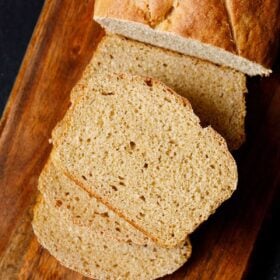
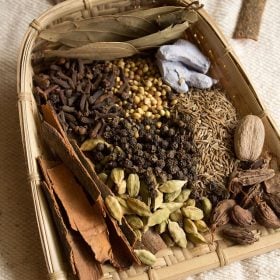
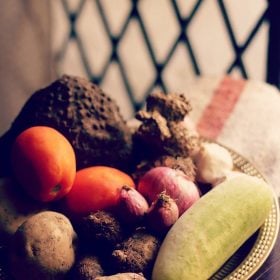
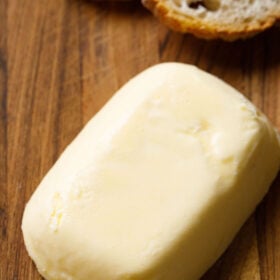








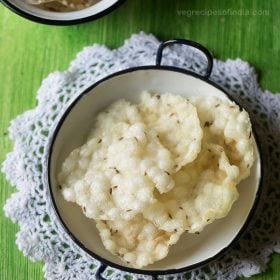
Hi nice n easy recipe unfortunately I have added up more salt which i am noticing after drying. In what way can we reduce the saltiness of the sabudana papad.
I don’t think there is anything that can be done to reduce the saltiness after the papads are dried. Too much salt is not advised for consumption and you can opt to trash this batch.
I followed your recipe to the tee , and although the outcome was as you depicted, on frying I found the papad was very chewy and sticking to the teeth kind of. Although it looked crisp and well done
on frying well the papad must not be chewy and sticking on the teeth. if the papad is not fried well, then chewiness can be there. they need to be fried well but not browned. fry in hot oil. the oil has to be more hot that as soon as you add the papad, it should puff up. so fry on a medium-high flame. hope these suggestions help.